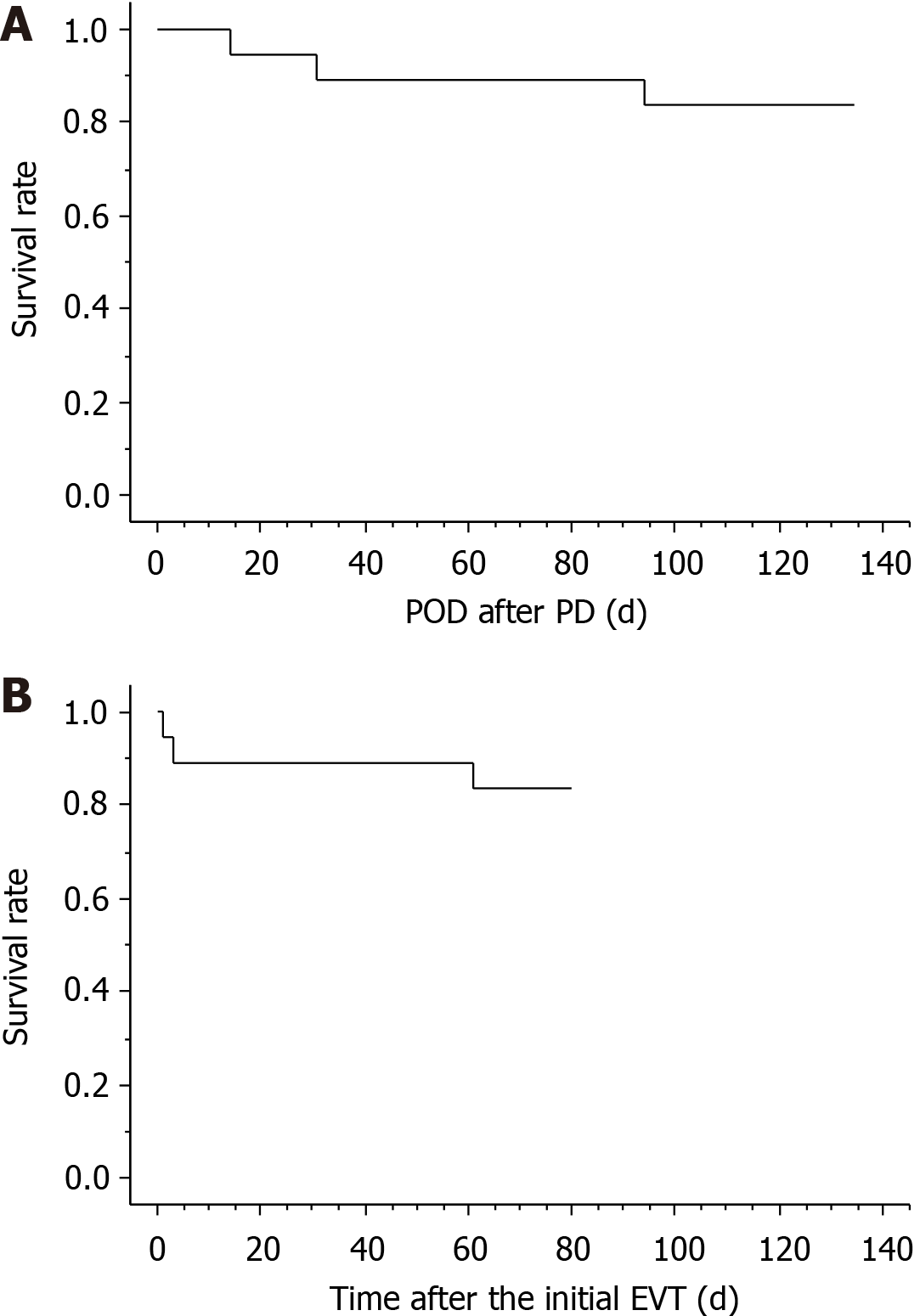Copyright
©The Author(s) 2021.
World J Hepatol. Apr 27, 2021; 13(4): 483-503
Published online Apr 27, 2021. doi: 10.4254/wjh.v13.i4.483
Published online Apr 27, 2021. doi: 10.4254/wjh.v13.i4.483
Figure 6 Short-term survival after pancreaticoduodenectomy and endovascular treatment.
Three patients (patients 2, 15, and 16) died during hospitalization, and the actual survival curves after pancreaticoduodenectomy (PD) and endovascular treatment (EVT) are shown. Fourteen (87.5%) patients were successfully treated because the cause of death in one patient (patient 2) was unrelated to arterial hemorrhage (cancer-related death). A: PD; B: EVT. EVT: Endovascular treatment; PD: Pancreaticoduodenectomy; POD: Postoperative day.
- Citation: Kamada Y, Hori T, Yamamoto H, Harada H, Yamamoto M, Yamada M, Yazawa T, Sasaki B, Tani M, Sato A, Katsura H, Tani R, Aoyama R, Sasaki Y, Okada M, Zaima M. Fatal arterial hemorrhage after pancreaticoduodenectomy: How do we simultaneously accomplish complete hemostasis and hepatic arterial flow? World J Hepatol 2021; 13(4): 483-503
- URL: https://www.wjgnet.com/1948-5182/full/v13/i4/483.htm
- DOI: https://dx.doi.org/10.4254/wjh.v13.i4.483









